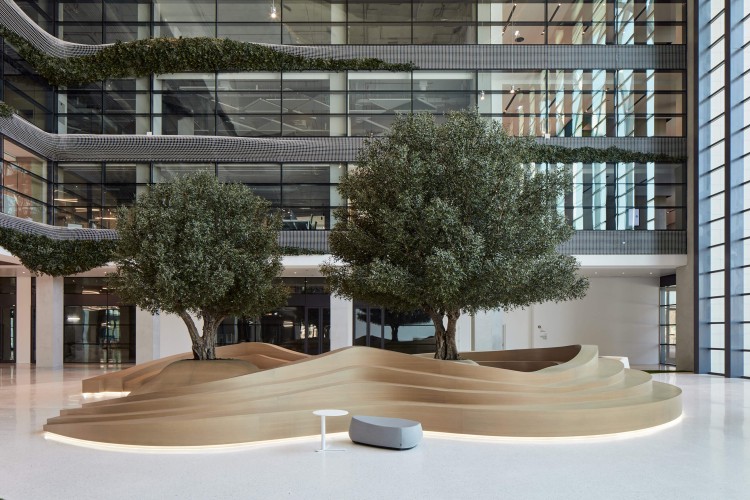Why are artificial trees better than real ones?

In recent years, artificial trees have become an increasingly popular alternative to real trees. From their aesthetic appeal to their environmental impact, there are several compelling reasons why people are choosing luxury artificial trees over their natural counterparts.
In this article, we will explore the benefits of artificial trees, their environmental impact, and why they might be the better option for you.
How do artificial trees help the environment?
Artificial trees offer several environmental benefits that make them an attractive option for eco-conscious consumers.
While real trees are often praised for their role in absorbing carbon dioxide and releasing oxygen, the process of cultivating, transporting, and disposing of real trees can have a significant environmental footprint.
- Reduction in deforestation: The production of artificial trees does not require cutting down real trees, which helps reduce deforestation and its associated environmental impacts.
- Lower carbon footprint: The carbon footprint of artificial trees is generally lower over their lifespan compared to real trees. Real trees need to be watered, fertilised and often require pesticides, all of which contribute to their overall carbon footprint.
- Reusability: Unlike real trees, which are typically used once and then discarded, artificial trees can be reused year after year, reducing waste and the demand for new resources.
Are artificial trees safe?
Artificial trees are generally safe. Modern artificial trees are made from non-toxic materials and are designed to be fire-resistant.
They do not shed leaves or needles, which can be a choking hazard for pets and small children, and they do not attract pests like insects or rodents, which can sometimes be a problem with real trees.
What are Artificial Trees?
Artificial trees are manufactured trees made from materials like plastic, silk, and other synthetic materials.
They are designed to replicate the appearance of real trees and are used for decorative purposes in homes, offices, and public spaces.
With advancements in manufacturing technology, today's artificial trees are incredibly lifelike, offering an aesthetic appeal that rivals that of real trees.
What are the pros of artificial trees?
Artificial trees come with a host of benefits that make them a practical and attractive choice for many households and businesses.
- Low maintenance: Unlike real trees, artificial trees do not require watering, pruning, or the removal of dead leaves. This makes them ideal for people with busy lifestyles or those who lack a green thumb.
- Allergen-free: Real trees can trigger allergies in some people, especially during the pollen season. Artificial trees are hypoallergenic, making them a better option for individuals with sensitivities.
- Durability and longevity: Artificial trees are designed to last for many years, maintaining their appearance and structure without the seasonal changes that affect real trees.
- Versatility: Available in various shapes, sizes, and styles, artificial trees can be customised to fit any decor or preference. They are also available in options that mimic specific types of real trees, providing a realistic look without the associated maintenance.
What are the cons of real trees?
While real trees have their benefits, they also come with several drawbacks that can make them less desirable compared to artificial trees.
- Maintenance requirements: Real trees require regular care, including watering, pruning, and pest control. They also shed leaves, which can create a mess and require additional cleaning.
- Seasonal lifespan: Most real trees have a seasonal lifespan, meaning they only look their best during certain times of the year. Outside of these periods, they can appear bare or unhealthy.
- Allergies: As mentioned earlier, real trees can trigger allergies in some people, making them a less suitable option for those with sensitivities.
Artificial trees provide a consistent and low-maintenance alternative to real trees. They remain lush and vibrant year-round without the seasonal changes that affect real trees.
This makes them an excellent choice for both indoor and outdoor spaces, providing a constant green presence without the hassle of ongoing maintenance.
Is it better to buy an artificial tree?
Given the various advantages, many people find that buying an artificial tree is a better option. The initial investment in an artificial tree can be higher, but the long-term benefits and cost savings often outweigh this initial cost.
Artificial trees are designed to be easy to set up and maintain. Most come with simple assembly instructions and can be put together in a matter of minutes.
Once set up, they require minimal maintenance, with occasional dusting being the primary upkeep needed.
Final thoughts
In conclusion, artificial trees offer numerous benefits over real trees, including environmental advantages, low maintenance, and versatility.
For those looking to make a practical and eco-friendly choice, artificial trees are an excellent option.
For more information on artificial trees and to find out more about our range of luxury artificial trees, contact us to get a quote today.





